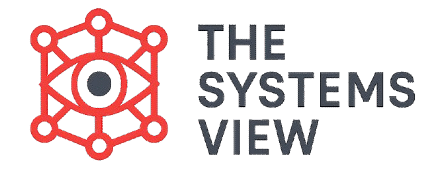If you have ever seen a machine adjust itself to meet a target—like a cruise control system keeping a car at a constant speed or a thermostat maintaining a room’s temperature—you have witnessed Cybernetics in action.
Cybernetics is the study of control and communication in all systems, whether they are living organisms (like a human or an animal) or artificial machines (like a robot or a computer). It is a way of thinking that sees systems as organized around the flow of information and the ability to correct errors.
This discipline provides the foundational concept of the feedback loop, which is central to all Systems Thinking.
1. The Core Idea: The Steersman
The term Cybernetics comes from the ancient Greek word kubernētēs, which means “steersman” or “governor of a ship.” This name directly reflects the goal of the field: to understand how a system steers itself toward a goal.
Control Through Communication
Cybernetics treats control and communication as two parts of the same whole.
- Communication is the flow of information within a system.
- Control is the purposeful use of that information to guide the system’s actions and keep it on course.
For example, a pilot uses communication (information from instruments) to exercise control (adjusting the rudder) and keep the plane on its flight path. The moment communication stops, control is lost.
Purpose and Error
A key insight of Cybernetics is that all purposeful systems work by continuously reducing error.
- Goal (Purpose): A system starts with a desired state (e.g., a room temperature of 22°C).
- Action: The system takes action (turns on the heater).
- Sensing (Feedback): The system measures the current state (20°C).
- Error: The system calculates the difference between the Goal (22°C) and the Current State (20°C). This difference is the error.
- Correction: The system communicates this error back to the controller to adjust the action and continue reducing the error.
2. The Feedback Loop: The Heart of the Science
The feedback loop is the most essential concept in Cybernetics. It is what allows a system to be self-regulating and achieve stability.
Negative (Balancing) Feedback
The most common form of feedback is negative feedback (also called balancing feedback). Despite the name, it is a force for stability and good.
- Function: Negative feedback works to counteract or reduce a change in a system. It brings the system back to its original desired state or goal.
- Example: A thermostat. When the temperature rises above the set goal, the thermostat sends a signal to turn the cooling on (a negative action). When the temperature falls below the goal, it turns the heat on. It constantly fights the change to maintain balance.
Positive (Reinforcing) Feedback
Positive feedback (also called reinforcing feedback) is a system mechanism that works to amplify or increase a change in the system.
- Function: It drives exponential growth or decline, pushing the system away from its starting point.
- Example: A microphone that picks up its own sound from the speaker. The sound is amplified, sent back to the microphone, and amplified again. This loop quickly leads to the screeching sound (a runaway process). In Cybernetics, this is seen as a breakdown of control.
3. Cybernetics Beyond the Machine
Cybernetics is not just about robots. The pioneers of the field proved that these laws of control and communication apply universally.
In Biology and Psychology
The nervous system uses continuous feedback to regulate everything from your heart rate to your balance. When you reach for a cup of coffee, your eyes and muscles send continuous negative feedback to your brain to ensure your hand stops exactly at the cup. Failure in these feedback systems leads to tremors or loss of balance.
In Management
In management, Cybernetics explains why simple, linear plans fail. If a manager makes a plan and never checks the results, they have no feedback. A Cybernetic approach requires managers to create systems where information about error (feedback) is constant and used for quick, necessary adjustments.
The fundamental contribution of Cybernetics to Systems Thinking is the realization that the ability to maintain a state, adjust to change, or achieve a goal depends entirely on the flow of information and the mechanism of the feedback loop.
Conclusion
Cybernetics is the powerful science that revealed the universal laws of control and communication. By focusing on feedback, error, and purposeful action, it provides the essential framework for understanding how all systems—biological, social, or mechanical—steer themselves. This framework allows us to identify where control is failing (e.g., a runaway positive loop) and find the leverage points to restore stability.



